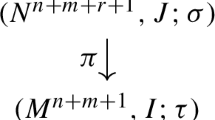Abstract
A behavioral framework for control of (max,+) automata is proposed. It is based on behaviors (formal power series) and a generalized version of the Hadamard product, which is the behavior of a generalized tensor product of the plant and controller (max,+) automata in their linear representations. In the tensor product and the Hadamard product, the uncontrollable events that can neither be disabled nor delayed are distinguished. Supervisory control of (max,+) automata is then studied using residuation theory applied to our generalization of the Hadamard product of formal power series. This yields a notion of controllability of formal power series as well as (max,+)-counterparts of supremal controllable languages. Finally, rationality as an equivalent condition to realizability of the resulting controller series is discussed together with hints on future use of this approach.

Similar content being viewed by others
Notes
In particular the definition of parallel composition that is formulated in terms of more general linear description in Prop. 3.1.
References
Alur R, Dill D (1994) The theory of timed automata. Theor Comp Sci 126:183–235
Arnold A (1994) Finite transition systems. Semantics of communicating systems. Prentice-Hall, Englewood Cliffs
Baccelli F, Cohen G, Olsder GJ, Quadrat J-P (1992) Synchronization and linearity. An algebra for discrete event systems. Wiley, New York
Berstel J, Reutenauer C (1988) Rational series and their languages. Springer, Berlin
Blyth TS, Janowitz MF (1972) Residuation theory. Pergamon, Oxford
Brandin BA, Wonham WM (1994) Supervisory control of timed discrete event systems. IEEE Trans Automat Contr 39(2):329–351
Gaubert S (1995) Performance evaluation of (max,+) automata. IEEE Trans Automat Contr 40(12):2014–2025
Gaubert S, Mairesse J (1999) Modeling and analysis of timed petri nets using heaps of pieces. IEEE Trans Automat Contr 44(4):683–698
Heymann M (1990) Concurrency and discrete event control. IEEE Control Syst Mag 10(4):103–112
Horn RA, Johnson CR (1994) Topics in matrix analysis. Cambridge University Press, Cambridge
Houssin L, Lahaye S, Boimond J-L (2007) Just in time control of constrained (max,+)-linear systems. Discrete Event Dyn Syst Theor Appl 17(2):159–178
Komenda J, Lahaye S, Boimond J-L (2008) Control of (max,+) automata: logical and timing aspects. In: Proceedings of WODES 2008, Gothenburg, Sweden, 28–30 May 2008
Kumar R, Heymann M (2000) Masked prioritized synchronization for interaction and control of discrete event systems. IEEE Trans Automat Contr 45(11):1970–1982
Lin F, Wonham WM (1988) On observability of discrete-event systems. Inf Sci 44:173–198
Lombardy S, Mairesse J (2006) Series which are both max-plus and min-plus rational are unambiguous. RAIRO—Inform Theor Appl 40:1–14
Ramadge PJ, Wonham WM (1989) The control of discrete-event systems. Proc IEEE 77:81–98
Van der Poorten AJ (1988) Solution de la conjecture de Pisot sur le quotient de Hadamard de deux fractions rationnelles. CR Acad Sci Paris 306, série I
Wong-Toi H, Hoffmann G (1995) The control of dense real-time discrete event systems. Technical report STA-CS-92-1411, Stanford University
Acknowledgements
This work was supported by the Academy of Sciences of the Czech Republic, Inst. Research Plan No. AV0Z10190503 and by EU.ICT project DISC.
Author information
Authors and Affiliations
Corresponding author
Rights and permissions
About this article
Cite this article
Komenda, J., Lahaye, S. & Boimond, JL. Supervisory Control of (max,+) Automata: A Behavioral Approach. Discrete Event Dyn Syst 19, 525–549 (2009). https://doi.org/10.1007/s10626-009-0083-6
Received:
Accepted:
Published:
Issue Date:
DOI: https://doi.org/10.1007/s10626-009-0083-6




